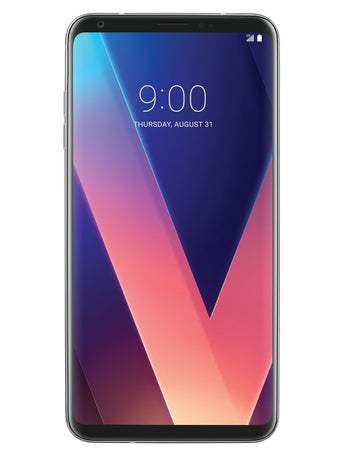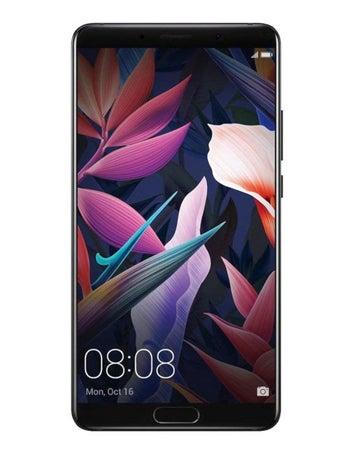LG V30 vs Huawei Mate 10 Specs Comparison
Compare mobile phone specifications of up to three devices at once. Our specs comparison tool helps you find and compare the perfect phone for your needs.
|
|
|
| LG V30 | Huawei Mate 10 |
|
Released
·
Sep 21, 2017
|
Released
·
Oct 20, 2017
|
|
6.0-inch · 2880x1440px
|
5.9-inch · 2560x1440px
|
|
Dual camera
|
Dual camera
|
|
4GB · 64GB
|
4GB · 64GB
|
|
3300 mAh
|
4000 mAh
|
Availability
| Officially announced | |
|---|---|
| Aug 31, 2017 | Oct 16, 2017 |
Design
| Dimensions | |
|---|---|
| 5.97 x 2.97 x 0.29 inches 151.7 x 75.4 x 7.39 mm |
5.93 x 3.06 x 0.32 inches 150.5 x 77.8 x 8.2 mm |
| Weight | |
| 5.57 oz / 158.0 g | 6.56 oz / 186.0 g |
| Materials | |
| Back: Glass (Corning Gorilla Glass 5) Frame: Aluminum |
Back: Glass Frame: Metal |
| Resistance | |
| Water, Dust, Shock; IP68; MIL-STD-810 certified | Splash, Dust; IP53 |
| Biometrics | |
| 2D Face unlock, Fingerprint (touch) | 2D Face unlock, Fingerprint (touch) |
| Features | |
| Notification light | |
| Keys | |
| Left: Volume control, Lock/Unlock key | Right: Volume control, Lock/Unlock key |
| Colors | |
| Black, Silver, Purple, Blue | Black, Gold, Brown, Pink |
Display
| Size | |
|---|---|
| 6.0-inch, 81.21% screen-to-body | 5.9-inch, 81.69% screen-to-body |
| Type | |
| P-OLED, HDR | IPS LCD, HDR, 730 nits |
| Resolution | |
| 2880x1440px, 18:9 ratio, 537 PPI | 2560x1440px, 16:9 ratio, 499 PPI |
| Protection | |
| Corning Gorilla Glass 5 | Corning Gorilla Glass |
| Features | |
| HDR support, Oleophobic coating, Scratch-resistant glass, Ambient light sensor, Proximity sensor | |
PhoneArena Display Test
| Bright Max (20% APL) | |
|---|---|
| Untested | Untested |
| Bright Min | |
| 3 (Average) | Untested |
Learn more on our
PhoneArena Display Test Results page.
Hardware
| System chip | |
|---|---|
| Snapdragon 835 MSM8998 (10 nm) | HiSilicon Kirin 970 (10 nm) |
| Processor | |
| Octa-core 2450 MHz Kryo 280 |
Octa-core 2360 MHz ARM Cortex-A73 and ARM Cortex-A53 |
| GPU | |
| Adreno 540 | Mali-G72 MP12 |
| Memory | |
| 4GB (LPDDR4)/64GB 4GB/128GB |
4GB (LPDDR4)/64GB |
| Storage expansion | |
| microSDXC up to 2000 GB | microSDXC up to 256 GB |
| OS | |
| Android (9.0 Pie, 8.0 Oreo, 7.1 Nougat) | Android (10, 9.0 Pie, 8.0 Oreo) |
Battery
| Type | |
|---|---|
| 3300 mAh, Li - Polymer | 4000 mAh, Li - Polymer |
| Charging | |
| Qualcomm Quick Charge 3.0 Qi and Powermat wireless charging |
Fast charging |
Camera
| Rear | |
|---|---|
| Dual camera | Dual camera |
| Main camera | |
| 16 MP (OIS, Laser and PDAF) Aperture size: F1.6 Focal length: 30 mm Sensor size: 1/3.09" Pixel size: 1 μm |
12 MP (OIS, Laser and PDAF, CMOS image sensor, BSI sensor) Aperture size: F1.6 Focal length: 27 mm Sensor size: 1/2.9" Pixel size: 1.25 μm |
| Second camera | |
| 13 MP (Ultra-wide) Aperture size: F1.9 Focal Length: 12 mm Sensor size: 1/3.4" Pixel size: 1 μm | 20 MP (Black and White, OIS, Laser and PDAF, CMOS image sensor, BSI sensor) Aperture size: F1.6 Focal Length: 27 mm Sensor size: 1/2.7" Pixel size: 1 μm |
| Flash | |
| LED | Dual LED |
| Video recording | |
| 4K UHD (30 fps), 1080p, 720p (240 fps) HDR, Time-lapse video, Continuous autofocus, Object tracking, EIS, Video calling, Video sharing | 4K UHD (30 fps), 1080p (60 fps), 720p Time-lapse video, Continuous autofocus, Object tracking, Picture-taking during video recording, Video light, EIS, Video calling, Video sharing |
| Front | |
| 5 MP (Wide Angle, Autofocus) Video capture: 1080p | 8 MP Video capture: 1080p |
Connectivity & Features
| Bluetooth | |
|---|---|
| 5.0 | 4.2 |
| WLAN | |
| a,b,g,n,ac,dual-band Wi-Fi Direct, Hotspot 802.11 a, b, g, n, ac | a,b,g,n,ac,dual-band Wi-Fi Direct, Hotspot 802.11 a, b, g, n, ac |
| USB | |
| Type-C, USB 3.1 | Type-C |
| Sensors | |
| Accelerometer, Gyroscope, Compass, Hall (for flip covers), Ambient light sensor, Proximity sensor | Accelerometer, Gyroscope, Compass, Hall (for flip covers), Barometer, Ambient light sensor, Proximity sensor |
| Hearing aid compatible | |
| M3/T3 | |
| Location | |
| GPS, A-GPS, Glonass, Galileo | GPS, A-GPS, Glonass, BeiDou |
| Other | |
| NFC, UMA (Wi-Fi Calling) | NFC, UMA (Wi-Fi Calling), Infrared, VoIP, Tethering, Computer sync, OTA sync |
Multimedia
| Headphones | |
|---|---|
| 3.5mm jack | 3.5mm jack |
| Speakers | |
| Earpiece, Loudspeaker | Earpiece, Loudspeaker |
| Features | |
| 32-Bit DAC, aptX-HD | Album art cover, Background playback |
| Screen mirroring | |
| DLNA,Wireless screen share | Wireless screen share |
| Additional microphone(s) | |
| Noise cancellation, Video recording | |
Cellular
| 4G (FDD) Bands | |
|---|---|
| 1, 2, 3, 4, 5, 7, 12, 13, 20, 25, 66 | 1, 2, 3, 4, 5, 7, 8, 9, 12, 17, 18, 19, 20, 26, 28 |
| 4G (TDD) Bands | |
| 39 | |
| 3G Bands | |
| 5, 8, 2, 1 | 6, 5, 8, 4, 2, 1 |
| Data Speed | |
| LTE-A Pro Cat 16 (1000/150 Mbit/s), HSDPA+ (4G) 42.2 Mbit/s, HSUPA, UMTS | LTE-A Pro Cat 18 (1200/150 Mbit/s), HSDPA+ (4G) 42.2 Mbit/s, HSUPA 5.76 Mbit/s |
| SIM type | |
| Nano SIM | Nano SIM |
| HD Voice | |
| Yes | Yes |
| VoLTE | |
| Yes | Yes |
Alternative variants
| Memory | 128GB |
|---|---|
| Dual SIM | Yes |
|---|---|
| FCC approval |
Date approved: Oct 16, 2017 FCC ID value: QISALP-LX9 |
| Measured SAR |
Head: 1.05 W/kg Body: 0.62 W/kg Simultaneous Transmission: 1.58 W/kg Wireless Router: 0.93 W/kg |
for Verizon Wireless
| 4G (FDD) Bands | 1, 2, 3, 4, 5, 7, 13, 20, 66 |
|---|---|
| 4G (TDD) Bands | 38, 39, 40, 41 |
| 3G Bands | 5, 4, 2, 1 |
for T-Mobile
| 4G (FDD) Bands | 1, 2, 3, 4, 5, 7, 12, 20, 66, 71 |
|---|---|
| 4G (TDD) Bands | 38, 39, 40, 41 |
| 3G Bands | 5, 4, 2, 1 |
| FCC approval |
Date approved: Oct 20, 2017 FCC ID value: ZNFH932 |
| Measured SAR |
Head: 0.88 W/kg Body: 0.69 W/kg Simultaneous Transmission: 1.57 W/kg Wireless Router: 0.69 W/kg Phablet: 2.38 W/kg |
for AT&T
| 4G (FDD) Bands | 1, 2, 3, 4, 5, 7, 12, 20, 29, 30, 66 |
|---|---|
| 4G (TDD) Bands | 38, 39, 40, 41 |
| 3G Bands | 5, 4, 2, 1 |
Discover more
|
|

